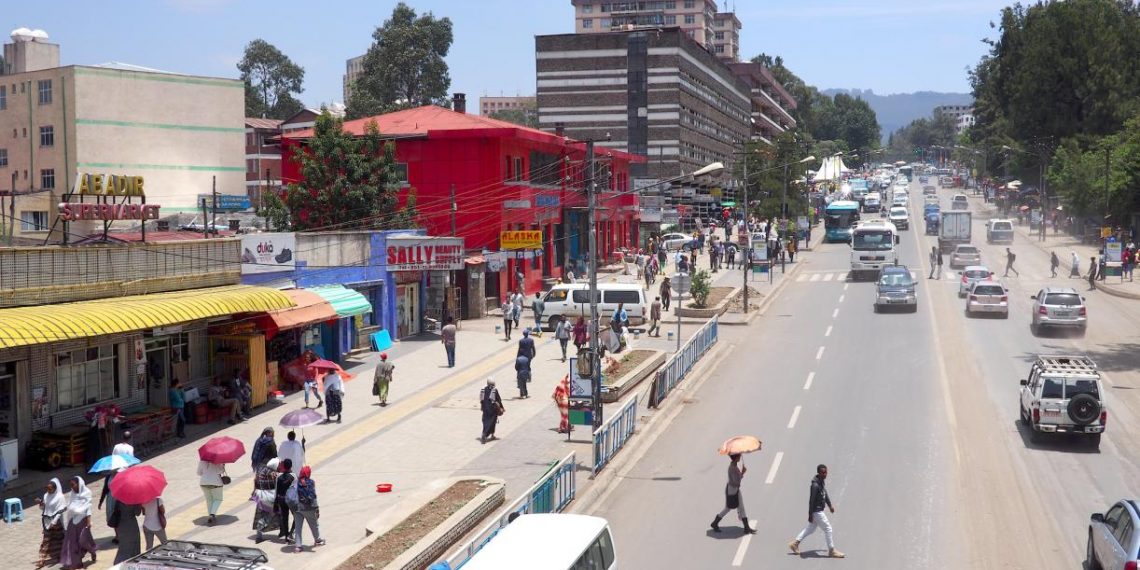Through research, technical advice and capacity-building, WRI is helping the Ethiopian government cut traffic fatalities by 50% while enhancing safety for pedestrians and cyclists.
The Challenge
More than 1.3 million people are killed and more than 50 million injured in traffic crashes every year. In Africa, a high proportion of these victims are pedestrians, cyclists and other vulnerable road users. In Ethiopia, for example, 33% of traffic-related deaths from 2019-2021 were pedestrians and 16% were children, according to the country’s Federal Police Commission.
Meanwhile, people who cannot afford safe transportation are often largely ignored in the planning, design and operation of roads, while road traffic injuries and deaths disproportionately affect lower socioeconomic groups.
WRI’s Role
WRI has worked to improve road safety in Addis Ababa, Ethiopia since 2015, and then expanded our work to the national scale. Using foundational WRI research like Cities Safer by Design and Sustainable and Safe, WRI Ethiopia advances a “Safe System” approach, which focuses on enhancing safety through urban design and road improvements vs. changing human behavior.
WRI Ethiopia provided technical advice and capacity-building to Ethiopia’s Ministry of Transport and Logistics as well as the Road Safety and Insurance Fund Services, including coordinating development of the 10-year National Road Safety Strategy. WRI also worked with partners to analyze potential solutions and implement programs to prevent crashes and fatalities, such as regular road safety inspections and speed-reduction measures at crash-prone areas.
WRI Ethiopia also provided technical support to several projects that prioritize pedestrians and cyclists over cars and other motorized transport. WRI supported the Ministry of Transport and Logistics to shape and scale “Car Free Days” across more than seven Ethiopian cities and helped secondary cities implement the Ministry of Transport and Logistics’ Non-Motorized Transport Strategy to improve public transport, walkways and bike paths.
The Outcome
WRI Ethiopia’s work advising the government resulted in national legislation and other policies that address the safety and mobility needs of all citizens.
For example, Ethiopia’s National Road Safety Strategy (2021-2030) aims to reduce traffic fatalities by 50% by 2030 by taking a Safe System approach. The country’s Non-Motorized Transport Strategy (2020-2029) outlines plans to invest in public transport and safe walking and cycling infrastructure, while including the needs of women, children and people with disabilities in mobility plans and budgets. These policies will not only enhance road safety, they’ll reduce air pollution, curb climate change and improve quality of life.
Progress is already visible. Ethiopia’s Federal Police Commission reported 3,149 fatal crashes between 2021 and 2022, compared to 3,628 that took place between 2019 and 2020. And in Addis Ababa, the city facing the highest urbanization and motorization rates, the number of road deaths has stabilized where it had previously been increasing.



